UPSC Daily Current Affairs: 7 August 2024 | Current Affairs & Hindu Analysis: Daily, Weekly & Monthly PDF Download
GS3/Economy
Govt to restore indexation benefit for property
Source: Mint

Why in news?
Following criticism over the Budget proposal to remove the indexation benefit on long-term capital gains (LTCG) from selling unlisted assets, the government has decided to offer taxpayers a choice.
- For properties acquired before July 23, 2024, taxpayers can either pay LTCG tax at 20% with the indexation benefit or pay LTCG tax at the new rate of 12.5% without the indexation benefit.
- This change comes from amendments made by the government in the Finance Bill.
About
- A capital gains tax is a tax imposed on the sale of an asset. It is calculated as the difference between the sale price of the property and its purchase price.
- Any gain or loss incurred from the sale of a house property may be subject to tax under the 'Capital Gains' head.
- Similarly, capital gains or losses may arise from the sale of different types of capital assets such as stocks, mutual funds, bonds, and other investments.
Types
- Depending on the period an asset is held with the owner, there are two types of capital gains - Short-term Capital Gains and Long-term Capital Gains.
Budget 2024 and Capital Gain Tax
- For classifying assets into long-term and short-term, there will only be two holding periods: 12 months and 24 months.
- The 36-month holding period has been removed.
- All listed securities with a holding period exceeding 12 months are considered Long-Term.
- The holding period for all other assets is 24 months.
Further Changes in Taxation
- The taxation of Short-Term Capital Gain for listed equity shares, a unit of an equity-oriented fund, and a unit of a business trust has been increased to 20% from 15%.
- Other financial and non-financial assets which are held for the short term shall continue to attract the tax at slab rates.
- The limit on the exemption of Long-Term Capital Gains on the transfer of equity shares or equity-oriented units or units of Business Trust has increased from Rs 1 Lakh to Rs 1.25 lakh per year.
- However, the rate at which it is taxed has increased from 10% to 12.5%.
- The tax on long-term capital gains on other financial and non-financial assets is reduced from 20% to 12.5%.
Indexation Benefits
- In case of property sale, indexation helps in adjusting its purchase price according to the prevailing inflation rate.
- Through indexation, investors can accurately determine their capital gains and be assured that they are paying taxes only on the real gains after inflation is adjusted.
Calculation of Adjusted Purchase Price
- The government releases cost inflation index (CII) numbers to index capital gains on specified assets.
- Formula to calculate the adjusted purchase price using the cost inflation index is: Indexed cost = Purchase Amount * (CII in year of sale / CII in year of purchase).
Possible Impact of Removal of Indexation Benefit
- Slowdown in the resale market
- Rise in cash transactions
- Higher property prices
Background
- The budget 2024 had announced the removal of the indexation benefits available on the property sale. It introduced a 12.5% LTCG tax rate without indexation.
- The indexation benefit that was previously available on the sale of long-term assets has now been done away with.
- The indexation benefit, however, can be taken on the sale of property bought or inherited before 2001.
GS2/Polity
Anti-Defection Law: Features, limitations and reforms
Source: Indian Express
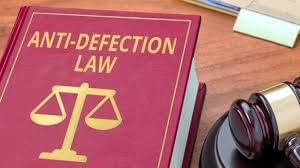
Why in news?
Numerous examples in recent time exist in the history of Parliament and State Assemblies where MPs or MLAs have defected from their party. These activities often led to the frequent falling of governments.
What is Anti-Defection Law?
- 52nd Constitutional Amendment introduced the anti-defection law through the Tenth Schedule in 1985.
- It aimed at tackling political defections destabilizing governments, especially after the 1967 general elections.
- According to this Schedule, a member of the State Legislature or the House of Parliament who voluntarily resigns from their political party, abstains from voting in the House contrary to the party’s instruction may be removed from the House.
- This voting instruction is issued by the party whip, a member of the parliamentary party nominated by the political party in the House.
Process of Disqualification under Anti-Defection Law
- Petition: Any member of the House can initiate the process by filing a petition/complaint with the Speaker (Lok Sabha) or Chairman (Rajya Sabha) alleging defection by another member.
- Presiding Officer CANNOT initiate disqualification proceedings suo moto and can only act upon a formal complaint.
- Deciding Authority: Speaker of Lok Sabha, Chairman of Rajya Sabha, or the State Legislative Assembly decides disqualification petitions under the anti-defection law.
- Timeframe: The law does not specify a strict timeline for the decision, which has led to criticism due to potential delays.
Exceptions
- No disqualification if 1/3rd members of the legislature party split to form a separate group (provision DELETED by the 91st Amendment in 2003).
- Mergers of political parties are allowed when 2/3rd of the members of a legislative party agree to merge with another party.
Three-Test Formula of the Supreme Court
The Supreme Court in Sadiq Ali versus Election Commission of India (1971) laid down the three-test formula for recognizing the original political party:
- Test of Aims and Objectives of the party.
- Test of Party Constitution, which reflects inner-party democracy.
- Test of Majority in the legislative and organizational wings.
Limitations of the Anti-Defection Law
- Dictatorship of Party: The law has been criticized for undermining democratic principles by restricting legislators’ freedom of speech and making them more accountable to party leaders than their constituents.
- Limited Political Choice: The law discriminates against independent members, disqualifying them immediately if they join a political party, while nominated members have a six-month grace period.
- Partial Law: The law needs a more precise timeline for resolving defection cases. It allows large-group defections, fostering opportunistic mergers and “horse-trading”, destabilizing the political system.
- Promotes Defection: It fails to address root causes like intra-party democracy, corruption, and electoral malpractices.
Recommendations on Reforming the Law
- Dinesh Goswami Committee (1990): Disqualification should be limited to cases of voluntarily giving up membership or voting/abstention contrary to the party direction only in specific motions. Decision on disqualification should be made by the President or Governor based on the advice of the Election Commission.
- Law Commission of India (2015): Proposed shifting the power to decide disqualification petitions from the Presiding Officer to the President or Governor based on the advice of the Election Commission.
- Supreme Court in K. M. Singh v. Speaker of Manipur (2020): Recommended transferring the Speaker’s decision-making authority over disqualification petitions to an independent tribunal presided over by judges.
Committee Led by Rahul Narwekar
- Announced by Lok Sabha Speaker Om Birla to review the nation’s anti-defection law.
PYQ
1. With reference to anti-defection law in India, consider the following statements:
a)The law specifies that a nominated legislator cannot join any political party within six months of being appointed to the House.
b)The law does not provide any time-frame within which the presiding officer has to decide a defection case.
Which of the statements given above is/are correct?
(a) 1 only
(b) 2 only
(c) Both 1 and 2
(d) Neither 1 nor 2
2. Which one of the following Schedules of the Constitution of India contains provisions regarding anti-defection?
(a) Second Schedule
(b) Fifth Schedule
(c) Eighth Schedule
(d) Tenth Schedule
GS2/Polity
Draft Broadcasting Services (Regulation) Bill 2024
Source: Indian Express

Why in News?
The latest draft of the Broadcasting Services (Regulation) Bill 2024 aims to replace the Cable Television Networks (Regulation) Act 1995. It focuses on regulating the broadcast of news and current affairs programs, excluding print news. These programs must adhere to the prescribed program code and advertisement code.
About the Draft Broadcasting Services (Regulation) Bill 2024:
Background:
This draft is a revised version of the one released by the Ministry of Information and Broadcasting in 2023. It aims to consolidate the legal framework for the broadcasting sector, extending it to include over-the-top (OTT) content and digital news.
Key Features:
- Definition of digital news broadcasters: The definition now includes publishers of news and current affairs content. This encompasses individuals broadcasting such programs through online platforms like news portals, social media intermediaries, etc., as part of a business or professional activity.
- Code of Ethics: The Bill aims to validate the code of ethics prescribed under the IT (Intermediary Guidelines and Digital Media Ethics Code) Rules 2021, despite legal challenges.
- Content Evaluation Committee (CEC): The establishment of a committee to evaluate and certify content compliance with the code. Creators now face a 3-tier regulation structure, requiring them to constitute CECs, register with a Self-Regulatory Organisation, and adhere to orders by the Broadcast Advisory Council appointed by the Centre.
- Regulation of OTT Platforms: The Bill aims to regulate OTT platforms, although the revised draft no longer includes streaming platforms in the definition of 'internet broadcasting services'. OTT platforms are now termed 'publishers of online curated content'.
Concerns Regarding the Draft Broadcasting Services (Regulation) Bill 2024:
- Potential impact on freedom of speech: The latest draft raises concerns about the government's power to regulate freedom of speech and expression, including defining digital news broadcasters broadly and setting standards for content evaluation.
- Exemption of certain players: The Bill may exempt specific stakeholders from its provisions, raising questions about fairness and inclusivity.
GS2/International Relations
How India needs to deal with the new Bangladesh?
Source: Indian Express
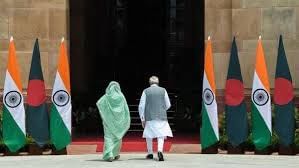
Why in news?
India will require significant political and diplomatic acumen to navigate the fallout from Sheikh Hasina’s fall, which could destabilize and potentially reshape the geopolitics of the subcontinent.
Why Hasina’s fall was not a surprise?
- Long-standing Discontent: Widespread protests against Sheikh Hasina’s government had been brewing over issues like a controversial quota system for government jobs, indicating significant public discontent.
- Authoritarian Drift: Hasina’s government has been accused of suppressing opposition and civil society through measures like the Digital Security Act, which has been used to arrest critics and journalists.
- Historical Context: Since gaining independence in 1971, Bangladesh has experienced several military coups, political assassinations, and periods of military rule, including the killing of Hasina’s father, Mujibur Rahman, in 1975.
Five Challenges Beyond 1971
- Engagement with Opposition: Due to prevailing political uncertainty, India needs to distance itself from Hasina and engage with her opponents to maintain credibility and influence in Bangladesh.
- Managing Regional Rivalries: India needs to prepare for potential exploitation of the situation by Pakistan and China, which may seek to influence the new government against Indian interests.
- Historical Narratives: Navigate the complex historical narratives surrounding the 1971 liberation of Bangladesh, recognizing that many in Bangladesh do not share the same interpretation.
- Economic Stability: Ensuring economic stabilization in Bangladesh will be crucial, requiring collaboration with regional partners to prevent extremism and maintain stability.
- Recognition of Local Agency: India must acknowledge that Bangladesh has its own political dynamics and agency, which cannot be solely dictated by Indian interests or actions.
What India must prepare for now? (Way forward)
- Diplomatic Strategy: Develop a proactive diplomatic strategy to engage with the new government in Bangladesh while avoiding perceptions of interference.
- Security Concerns: India must be vigilant about border security and the potential resurgence of anti-India activities, especially if the new government leans towards Pakistan or China.
- Economic Engagement: Strengthening economic ties and leveraging people-to-people connections will be essential for maintaining a positive relationship with Bangladesh, regardless of political changes.
- Learning from Past Experiences: India should draw lessons from its past experiences with political transitions in the region, such as in Afghanistan, to navigate the current situation effectively.
- Collaborative Approach: Working with international partners, including the US and Gulf nations, will be important to address the challenges posed by the political shift in Bangladesh and to ensure regional stability.
Mains PYQ:
Critically examine the compulsions which prompted India to play a decisive role in the emergence of Bangladesh. (2013)
GS3/Economy
RBI Report on Currency and Finance (RCF), 2023-24
Source: Indian Express

Why in news?
The Reserve Bank of India (RBI) released the “Report on Currency and Finance (RCF)” for the year 2023-24 with the theme – India’s Digital Revolution.
What is the Report on Currency and Finance (RCF)?
The RCF is an annual publication by the Reserve Bank of India (RBI). It covers various aspects of the Indian economy and financial system, providing insights and analysis on current economic conditions, financial stability, and policy issues. The theme for the 2023-24 report is “India’s Digital Revolution.”
Focus
It focuses on the transformative impact of digitalization across various sectors in India, especially in the financial sector.
Highlights
Digital Revolution
- The RCF emphasizes India’s leading role in the global digital revolution. With robust digital public infrastructure (DPI), evolving institutional frameworks, and a tech-savvy population, India has emerged as a frontrunner in this arena.
- Key initiatives such as Aadhaar, the world’s largest biometric-based identification system, and the UPI, a real-time, low-cost transaction platform, have revolutionized service delivery and financial inclusion.
Digitalization in Finance
- The above-discussed initiatives have made retail payments faster, more convenient, while the RBI’s pilot runs of the E-Rupee position India at the forefront of digital currency initiatives.
- The digital lending ecosystem is also vibrant, with the Open Credit Enablement Network and Open Network for Digital Commerce (ONDC) driving growth.
Remittance Inflows in India
- India continues to lead as the highest remittance recipient globally, with remittances accounting for 13.5% of the world’s total. The RCF highlights that more than half of India’s inward remittances in 2021 came from the Gulf countries, with North America contributing 22%.
Smartphones Penetration
- India’s mobile penetration has seen remarkable growth, with internet penetration reaching 55% in 2023. The cost per gigabyte of data in India is the lowest globally, at an average of Rs. 13.32 per GB. India has one of the highest mobile data consumption rates worldwide, with an average per-user per-month consumption of 24.1 GB in 2023.
GS3/Economy
Performance of Ayushman Bharat Scheme
Source: Business Standard
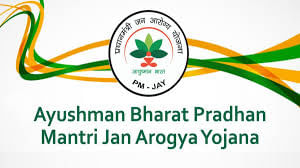
Why in News?
Beneficiaries aged 70 years and above accounted for more than 12% of all admissions under the Ayushman Bharat health insurance scheme, as per data shared by the Union Ministry of Health and Family Welfare in Parliament.
About Ayushman Bharat Scheme:
Ayushman Bharat, a prominent initiative of the Government of India, was initiated in 2018 following the recommendations of the National Health Policy 2017, aiming to achieve Universal Health Coverage.
This program is structured to align with Sustainable Development Goal number 3, emphasizing the principle of "leave no one behind."
Ayushman Bharat Components:
- Pradhan Mantri Jan Arogya Yojana (PM-JAY): It offers health insurance coverage of Rs. 5 lakhs annually to over 10 crore economically disadvantaged families for secondary and tertiary care.
- Health and Wellness Centres (HWCs): These were established by transforming existing Sub Centres and Primary Health Centres to provide quality healthcare closer to communities, thus reducing out-of-pocket healthcare expenses.
About Ayushman Bharat Health and Wellness Centres (HWCs)
In February 2018, the Indian government announced the establishment of 1,50,000 Health and Wellness Centres (HWCs) by upgrading existing facilities.
The primary aim is to ensure easy access to quality healthcare within local communities, ultimately enhancing health outcomes and reducing healthcare costs for individuals and families.
Key Features of HWCs:
- Free essential medicines and diagnostic services
- Teleconsultation facilities
- Health promotion activities including Yoga
- Annual screenings for Non-Communicable Diseases for individuals aged 30 and above
Progress/Achievements under Ayushman Bharat Scheme:
- The scheme achieved a significant milestone with over 30 crore Ayushman cards issued by January 2024.
- An 'Ayushman App' was launched to facilitate Ayushman Card creation, with Uttar Pradesh leading in card issuance.
- Gender equity is a core principle of the scheme, with 48% of treatments availed by females.
- Ayushman Bharat facilitated 6.2 crore hospital admissions worth more than Rs. 79,000 crores.
Performance of Ayushman Bharat Scheme
- Recent data presented in Parliament highlights that individuals aged 70 years and above constituted over 12% of all admissions and nearly 14% of the total expenditure under the Ayushman Bharat scheme until January 2024.
- Out of approximately 6.2 crore approved hospital admissions, around 57.5 lakh were for senior citizens aged 70 years and above, with treatment expenses exceeding Rs 9,800 crore out of the total Rs 79,200 crore spent in the last six years.
- The government's plan to extend Ayushman Bharat to all individuals over 70, regardless of economic status, is expected to incorporate around 4 crore new beneficiaries, potentially increasing both utilization and costs of the program.
- The scheme was expanded to include ASHA and Anganwadi workers in the interim budget, with no further expansions mentioned in the subsequent budget, albeit with a slight increase in allocation to Rs 7,300 crore.
Challenges and Considerations:
- India's ageing population is projected to substantially increase by 2050, necessitating proactive healthcare measures.
- Several states witnessed higher hospital admissions for older individuals compared to their population share, indicating a growing need for elderly care services.
- States like Maharashtra, Kerala, Haryana, and others demonstrated higher spending proportions on elderly healthcare due to various factors such as longer healing times, increased risk of secondary infections, and multiple health conditions.
GS2/International Relations
A shift in the US to autocratic trends
Source: The Hindu

Why in news?
Since World War II, U.S. foreign policy has revolved around democracies versus dictatorships. This distinction has become less clear due to recent domestic political shifts and changing alliances.
The binary between democracy and autocracy in the USA
- Democracy is a system of government where the population, usually through elected representatives, holds power. It emphasizes freedom, constitutional governance, and safeguarding fundamental rights.
- Autocracy is characterized by absolute power vested in a single ruler, where the ruler's will overrides individual rights and freedoms. Autocracies suppress dissent, limit political diversity, and often rely on coercion to maintain control.
Current Political Climate
- The U.S. political landscape is shifting towards a more autocratic style of governance, particularly within factions of the Republican Party.
- There is a growing acceptance of strongman leadership, undermining traditional democratic norms and institutions.
- Former President Trump's actions and rhetoric have shown disregard for the checks and balances fundamental to American democracy, indicating a shift towards autocratic governance.
Implications of the Shift
- This trend raises concerns about the future of democracy in the U.S. Supporters of Trump and similar populist leaders view the federal government as an adversary, perpetuating a narrative that pits 'the people' against a corrupt establishment.
GS1/Indian Society
Counting the ‘poor’ having nutritional deficiency
Source: The Hindu

Why in news?
The National Sample Survey Office has released the Household Consumption Expenditure Survey (HCES) report for 2022-23, along with public access to unit-level data on household expenditures.
What does the recent NSSO Report tell us?
- The report utilizes various definitions of poverty established by past committees, with the poverty line (PL) being anchored to calorie norms of 2,400 kcal for rural and 2,100 kcal for urban areas as per the Lakdawala Committee.
- The Rangarajan Committee's approach considers broader normative levels, including non-food expenses.
- Average per capita calorie requirement (PCCR) is estimated at 2,172 kcal for rural and 2,135 kcal for urban populations.
- The report highlights that the average per capita calorie intake (PCCI) for the poorest segments falls significantly below these requirements, indicating nutritional deficiencies.
- The total monthly per capita consumption expenditure (MPCE) thresholds are set at ₹2,197 for rural and ₹3,077 for urban areas, with proportions of the population identified as ‘poor’ being 17.1% in rural and 14% in urban contexts.
Approach for measurement is the Issue:
- Defining Poverty: The report defines the poor based on MPCE, which is linked to the ability to purchase essential food and non-food items.
- Caloric Requirement Calculation: Is derived from the ICMR-National Institute of Nutrition’s latest recommendations, weighted by the population distribution across age-sex-activity categories.
- Fractile Class Analysis: Households are categorized into 20 fractile classes based on MPCE, allowing for a detailed understanding of expenditure distribution and nutritional intake variations within the population.
- State-Specific Adjustments: The all-India thresholds are adjusted for regional price differences to derive state-specific MPCE thresholds.
Recommendations for Improving Nutritional Levels (Way Forward)
- Nutritional Schemes: Government needs to develop and expand schemes specifically aimed at improving the nutritional intake of the poorest households.
- Awareness and Education: Government should increase awareness about nutrition and healthy eating practices among low-income households.
- Subsidized Food Programs: Need to enhance access to subsidized food items to ensure that households can meet their caloric and nutritional needs.
- Monitoring and Evaluation: Government should establish robust mechanisms to monitor the effectiveness of nutritional interventions and adjust strategies as necessary.
Conclusion: The NSSO HCES 2022-23 report reveals significant nutritional deficiencies among the poorest. To align with SDG goals, expanding targeted nutritional schemes, subsidized food programs, and robust monitoring is essential.
Mains PYQ:
How far do you agree with the view that the focus on the lack of availability of food as the main cause of hunger takes the attention away from ineffective human development policies in India? (2013)
GS3/Economy
GST on Health and Life Insurance Premiums
Source: Indian Express
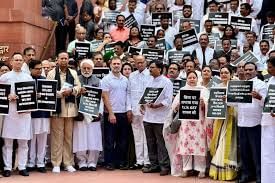
Why in news?
Insurance premiums on health and life policies have increased this year, and the 18% Goods and Services Tax (GST) has made insurance less affordable for many people. Medical inflation, estimated at 14% towards the end of last year, along with increased premiums, has made buying medical insurance difficult for many.
What is the GST on Health and Life Insurance Premiums?
- GST replaced all indirect taxes like service tax and cess from July 1, 2017.
- Currently, GST on health and life insurance policies is fixed at 18%.
- The Centre collects 9% GST with a matching collection by states.
- Before GST, life insurance premiums were subject to 15% service taxes, including Basic Service Tax, Swachh Bharat cess, and Krishi Kalyan cess.
Rational behind the Tax
GST Council Recommendations:
- GST rates and exemptions on all services, including insurance, are prescribed on the recommendations of the GST Council, which includes the Union Finance Minister and ministers nominated by state governments.
- Insurance is considered a service policyholders pay tax on their premiums, generating significant revenue for the government.
Tax Deductions
- Insurance policies allow certain deductions while computing income tax under Sections 80C and 80D of the Income Tax Act, 1961. Customers can avail deductions on the premium, including the GST applicable.
Arguments for Withdrawing the GST on Premiums
High Premium Increases:
- Significant increases in premiums on health insurance policies this year have been observed, with some public sector insurers hiking premiums by 50%.
- The renewal rate of policies is declining due to frequent premium hikes and medical inflation.
Comparative GST Rates:
- Confederation of General Insurance Agents’ Associations of India points out that GST on insurance in India is the highest in the world. The high GST rate is seen as a deterrent to insurance penetration, which conflicts with the goal of “Insurance for All by 2047”.
Recommendations for Rationalisation
- Standing Committee on Finance recommended rationalising the GST rate on insurance products to make them more affordable.
- Suggestions include reducing GST rates for health insurance, especially for senior citizens, micro-insurance policies, and term policies.
Insurance Penetration in India
- According to a Swiss Re Sigma report, insurance penetration in India’s life insurance sector reduced from 3.2% in 2021-22 to 3% in 2022-23, while the non-life insurance sector remained stagnant at 1%.
- Overall insurance penetration reduced to 4% in 2022-23 from 4.2% in 2021-22.
GS2/Polity
On UP’s stringent Anti-conversion law
Source: The Hindu
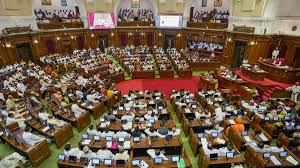
Why in news?
The Uttar Pradesh Assembly has made amendments to its Anti-Conversion law, which has been criticized for facilitating misuse with over 400 cases registered since its enactment in 2021.
What is UP’s ‘Anti-conversion’ law?
- The law is officially known as the Uttar Pradesh Prohibition of Unlawful Conversion of Religion Act, 2021, and it prohibits religious conversions through illegal means such as misrepresentation, force, coercion, allurement, or fraudulent activities.
Reasons for amending the Original 2021 Anti-Conversion Law in UP
- Increased Stringency: The amendments aim to make the law more rigorous in response to the reported rise in forced conversions and alleged involvement of foreign and anti-national elements in demographic shifts.
- Response to Public Discontent: The amendments were made to enhance penalties and legal measures to prevent unlawful conversions, especially concerning vulnerable groups like minors and women.
- Legitimacy of Complaints: The amendment allows third parties to report alleged unlawful conversions, broadening the law's scope and potentially increasing its application against inter-faith marriages.
Key features of the amended law
- Harsh Penalties: The revised law introduces severe penalties, including imprisonment of up to 20 years or life, for coercing or forcing minors, women, or specific communities into conversion.
- Bail Conditions: The law sets stringent bail conditions that make it challenging for accused individuals to obtain bail, requiring consent from the public prosecutor and assuming guilt.
- Third-Party Complaints: Allowing anyone to lodge complaints against alleged conversions may lead to misuse by communal groups and individuals with vested interests, potentially targeting inter-faith couples.
Details about bail conditions and ‘foreign funding’
- Bail conditions: According to the amended law, an accused individual cannot secure bail unless the public prosecutor has the chance to object, and there are grounds to believe the accused is innocent and unlikely to repeat the offense.
- Foreign funding: The law imposes strict penalties for receiving funds from foreign organizations for illegal conversions, aiming to deter financial support for conversion activities.
Comparison with other states
- Comparison with Other States: While several states have anti-conversion laws, UP’s amendments are notably stricter, with provisions for life imprisonment absent in other states.
- Bail and Proof Burden: Other states may not have such severe bail conditions or the reverse burden of proof required in Uttar Pradesh, making it easier for accused individuals in those states to secure bail.
- Scope of Complaints: In many states, only aggrieved individuals or their close relatives can file complaints, whereas UP's amendments allow for broader third-party complaints, increasing the potential for misuse.
Way forward
- Promote Awareness of Rights: Conduct comprehensive public awareness campaigns to educate citizens about their legal rights concerning religious conversion and inter-faith marriages.
- Legal and Constitutional Review: Stakeholders, including civil society organizations and legal experts, should actively engage in legal challenges against the amended law in the Supreme Court of India.
|
63 videos|5407 docs|1145 tests
|
















